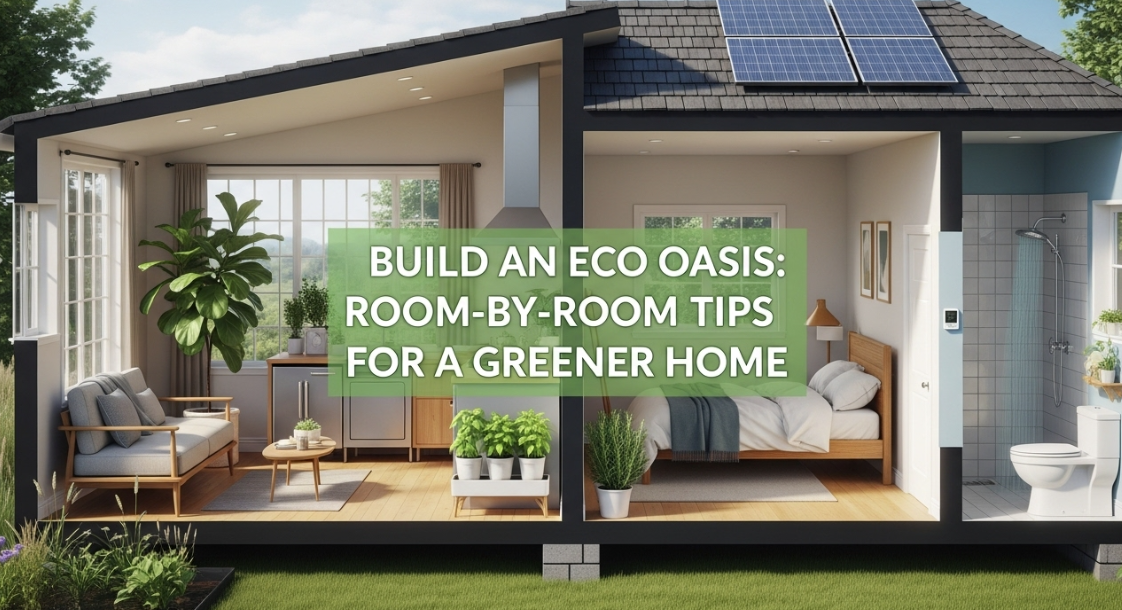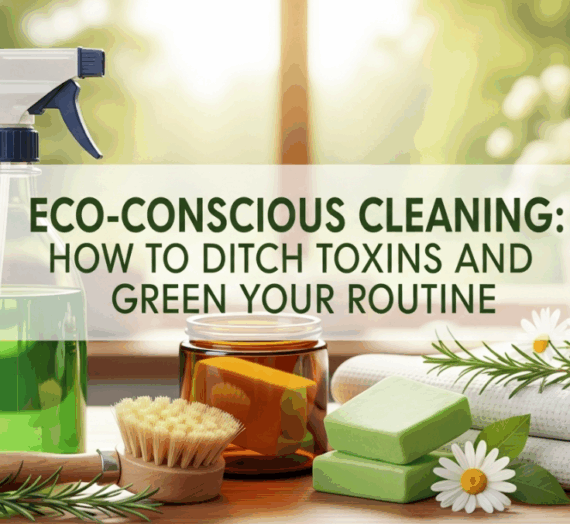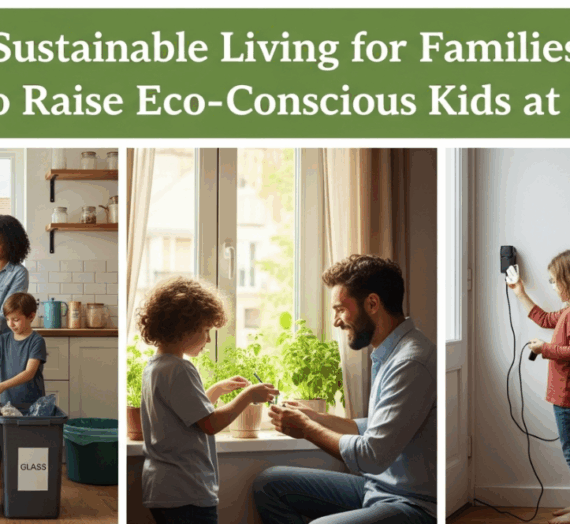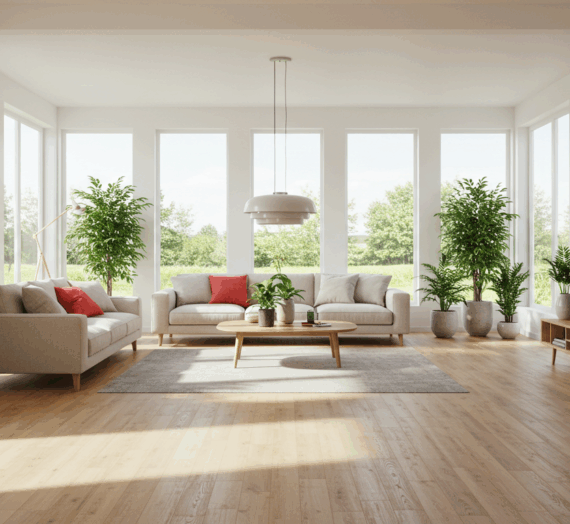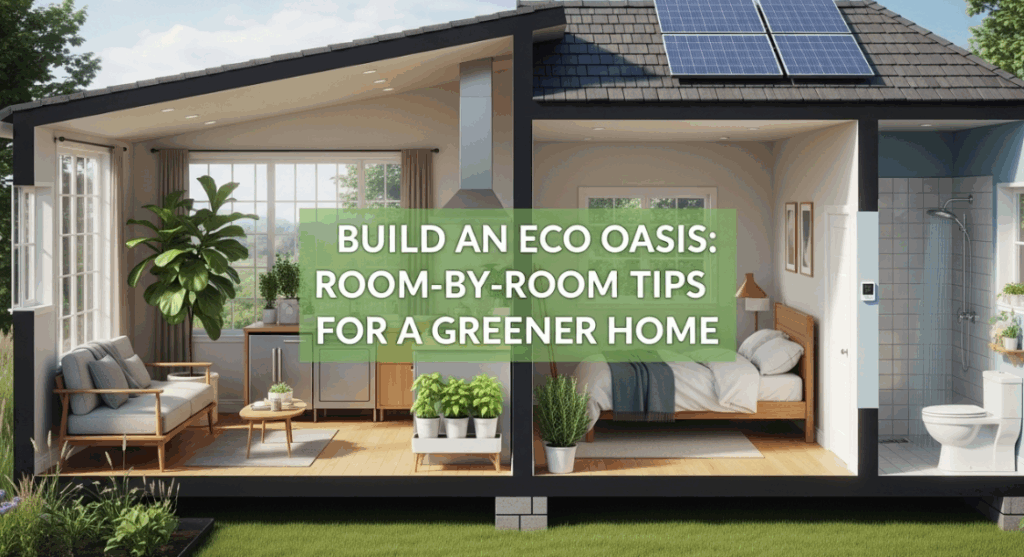
Why Creating an Eco Oasis at Home Matters
Our homes are not only where we spend much of our time they also play a massive role in our personal carbon footprint. From energy consumption to plastic waste, every room contributes to environmental impact. But the good news is that by making smart, intentional choices, you can transform your living space into an eco oasis: a home that’s not only sustainable, but also healthier, more efficient, and cost-saving.
This article will guide you room by room, offering practical swaps, simple upgrades, and eco-friendly habits to make your home more planet-friendly without sacrificing comfort or style.
For further reading and to find peer-reviewed studies and extension guidance on household energy, waste reduction, and sustainable materials, search authoritative sources such as Google Scholar or your local university extension. Example searches: Google search for home sustainability studies and Bing search for home sustainability studies.
The Living Room: Sustainable Comfort Starts Here
The living room is where most families gather. Making it greener is about choosing non-toxic materials and reducing energy usage while enhancing coziness.
Eco-Friendly Furniture and Decor
Opt for furniture made from reclaimed wood, bamboo, or FSC-certified materials. Ditch synthetic rugs for wool, jute, or organic cotton options. For decor, choose items from local artisans or repurpose what you already have instead of buying new.
Energy-Efficient Lighting
Switch to LED light bulbs and take advantage of natural daylight. Add smart lighting systems or timers to reduce unnecessary usage. Choose light paint colors to reflect light and brighten the room naturally.
The Kitchen: Where Sustainability and Nutrition Intersect
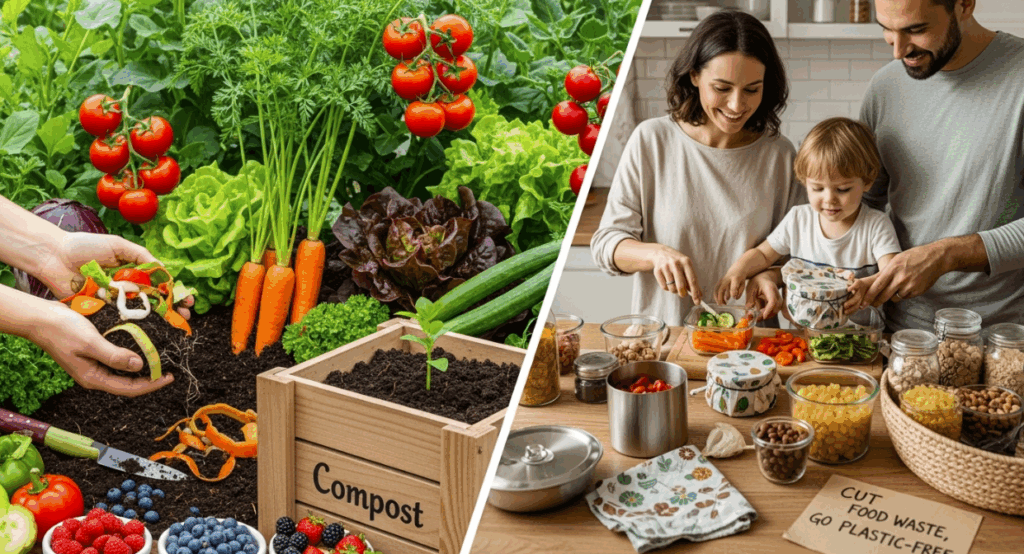
The kitchen is one of the most waste-intensive rooms. Reducing food, water, and plastic waste can significantly decrease your environmental impact.
Cut Food Waste and Go Plastic-Free
- Use glass containers, beeswax wraps, or stainless steel tins instead of plastic wraps and bags.
- Plan meals, freeze leftovers, and compost scraps to reduce food waste.
- Buy in bulk to avoid excess packaging and store dry goods in reusable glass jars.
Upgrade Appliances
When replacing old appliances, opt for ENERGY STAR-rated fridges, dishwashers, and ovens. These models consume up to 50% less energy and water, helping the planet and your utility bills.
The Bathroom: Go Green Without Sacrificing Clean
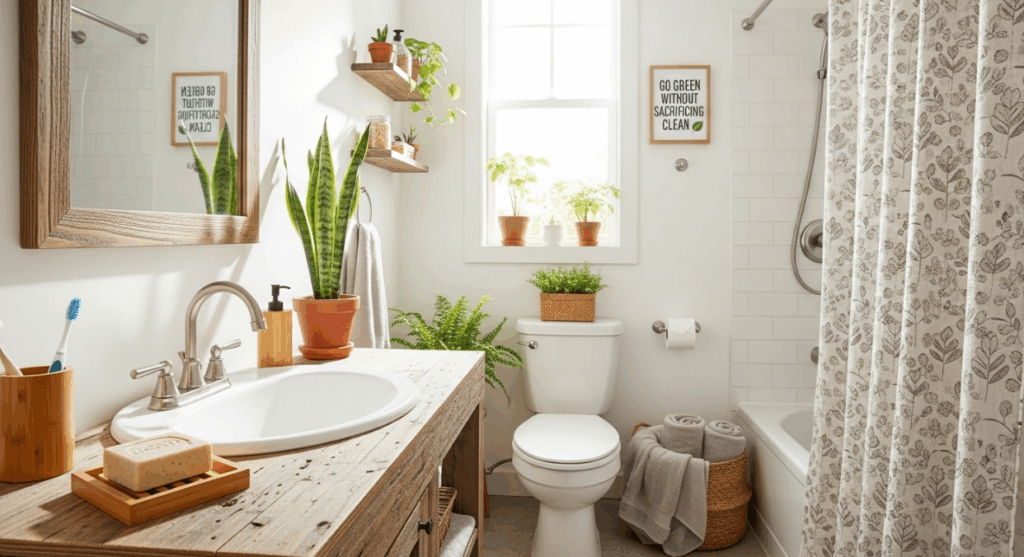
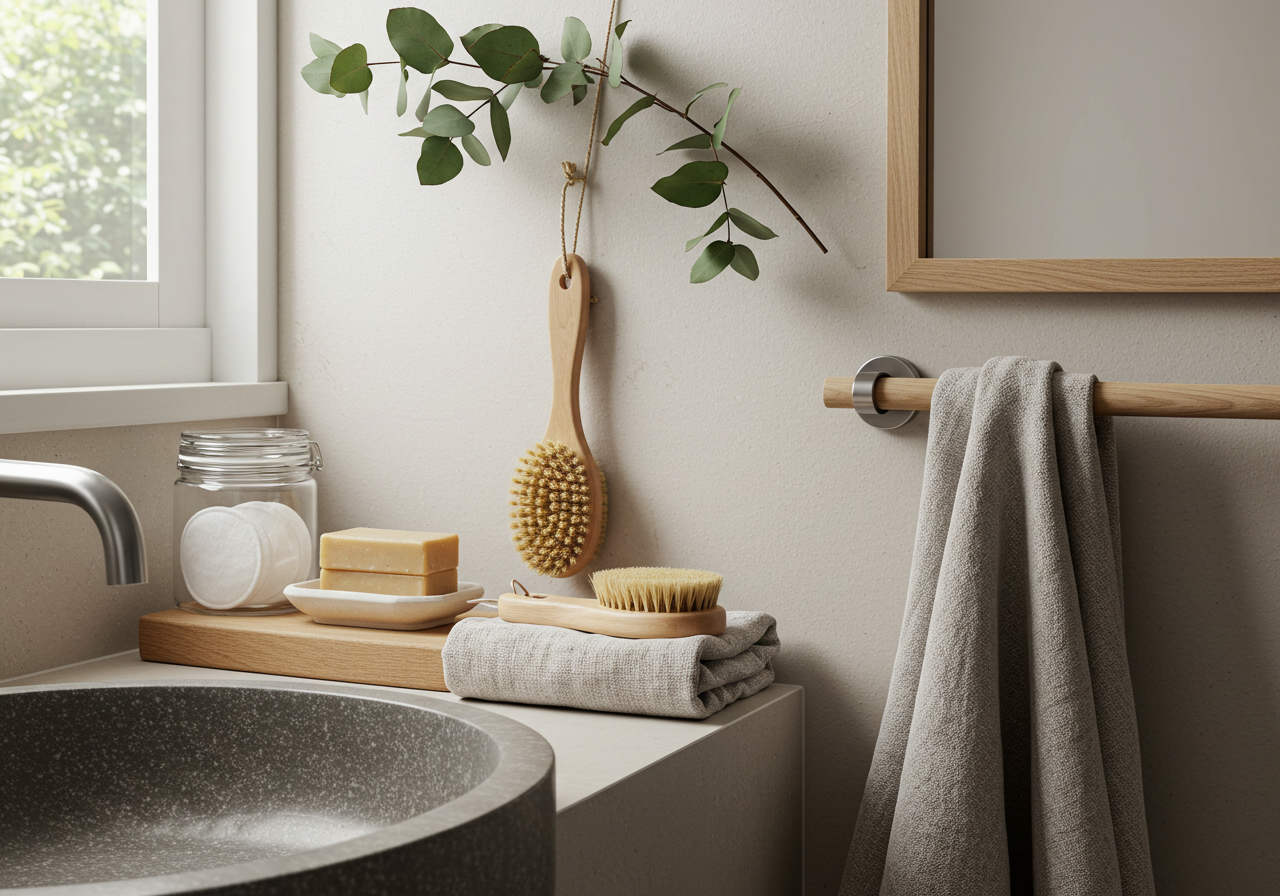
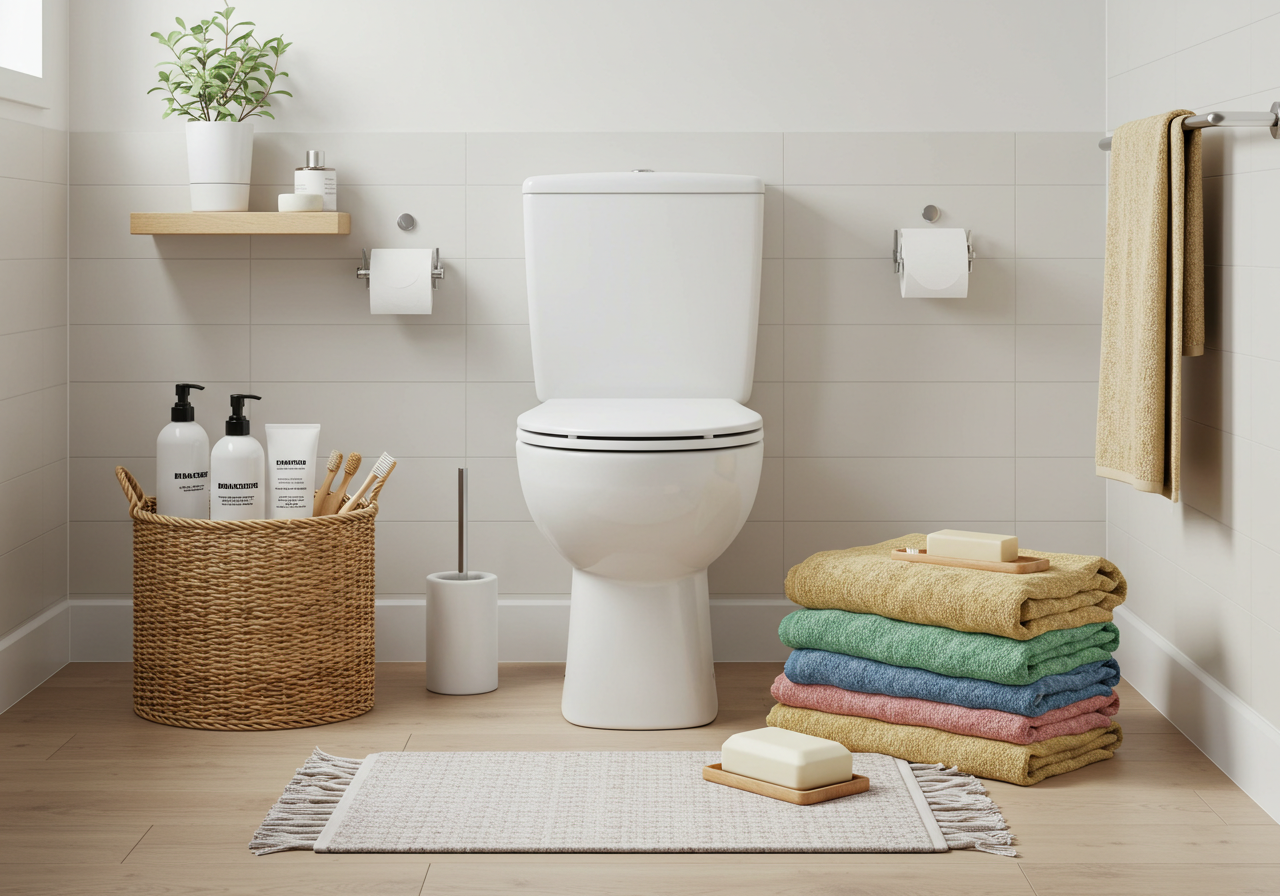

Bathrooms are hotspots for water consumption and chemical-heavy products. Making mindful changes here can reduce toxins and improve water efficiency.
Choose Natural Personal Care Products
Use bar soap, shampoo bars, and refillable toothpaste tablets packaged in cardboard or glass. Look for cruelty-free, biodegradable ingredients free from parabens, sulfates, and synthetic fragrances.
Conserve Water with Smart Fixtures
Install low-flow showerheads and faucets. Use dual-flush or water-saving toilets to drastically cut down water usage. A quick five-minute shower saves over 10 gallons compared to a bath.
The Bedroom: Rest Easy with Greener Choices
Where you sleep should be your healthiest room. Prioritizing air quality and sustainable materials supports both wellness and the environment.
Go Organic and Non-Toxic
Choose organic cotton or bamboo sheets. Look for mattresses made from natural latex, wool, or organic cotton without chemical flame retardants. Air-purifying plants like snake plants and peace lilies also improve air quality naturally.
Declutter Sustainably
Donate old clothes and upcycle bedroom furniture instead of throwing it out. Organize using bins made of recycled or natural materials like seagrass or hemp.
The Laundry Room: Clean Clothes, Cleaner Planet
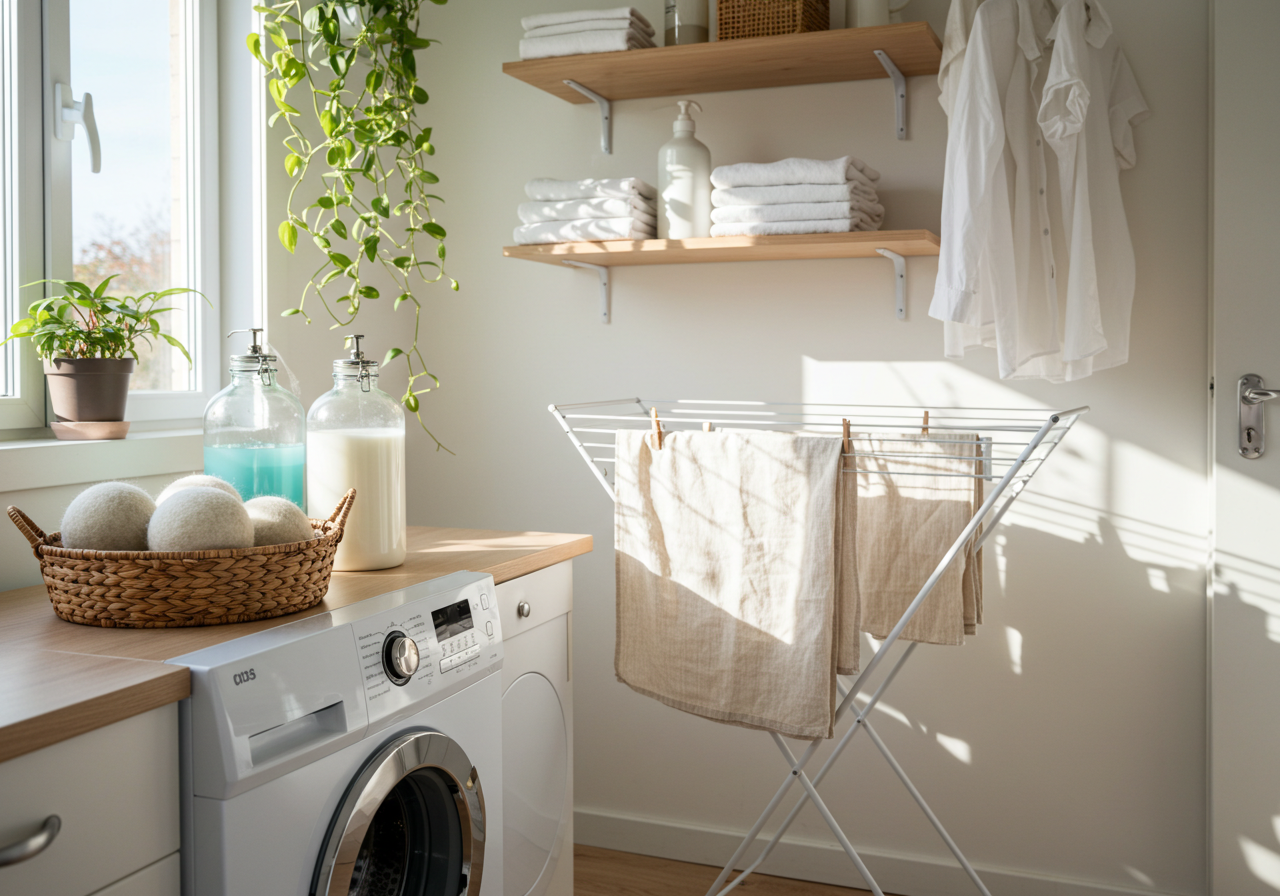
Detergents and water use in the laundry room often go unnoticed, but this area offers many easy wins for eco-conscious households.
Eco Laundry Tips
- Wash with cold water to save energy and prevent microplastic shedding.
- Use natural detergents in recyclable packaging, or DIY your own with baking soda and soap nuts.
- Air-dry clothes when possible; if you use a dryer, add wool dryer balls to cut drying time.
Outdoor Spaces: Sustainable Living Beyond the Walls
If you have a balcony, backyard, or rooftop, use it to promote biodiversity and food security.
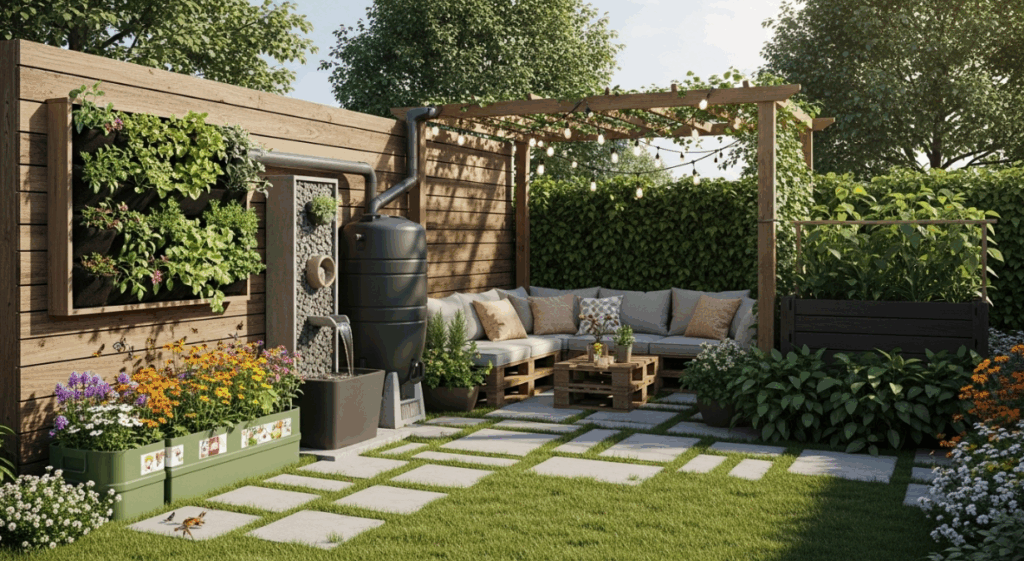

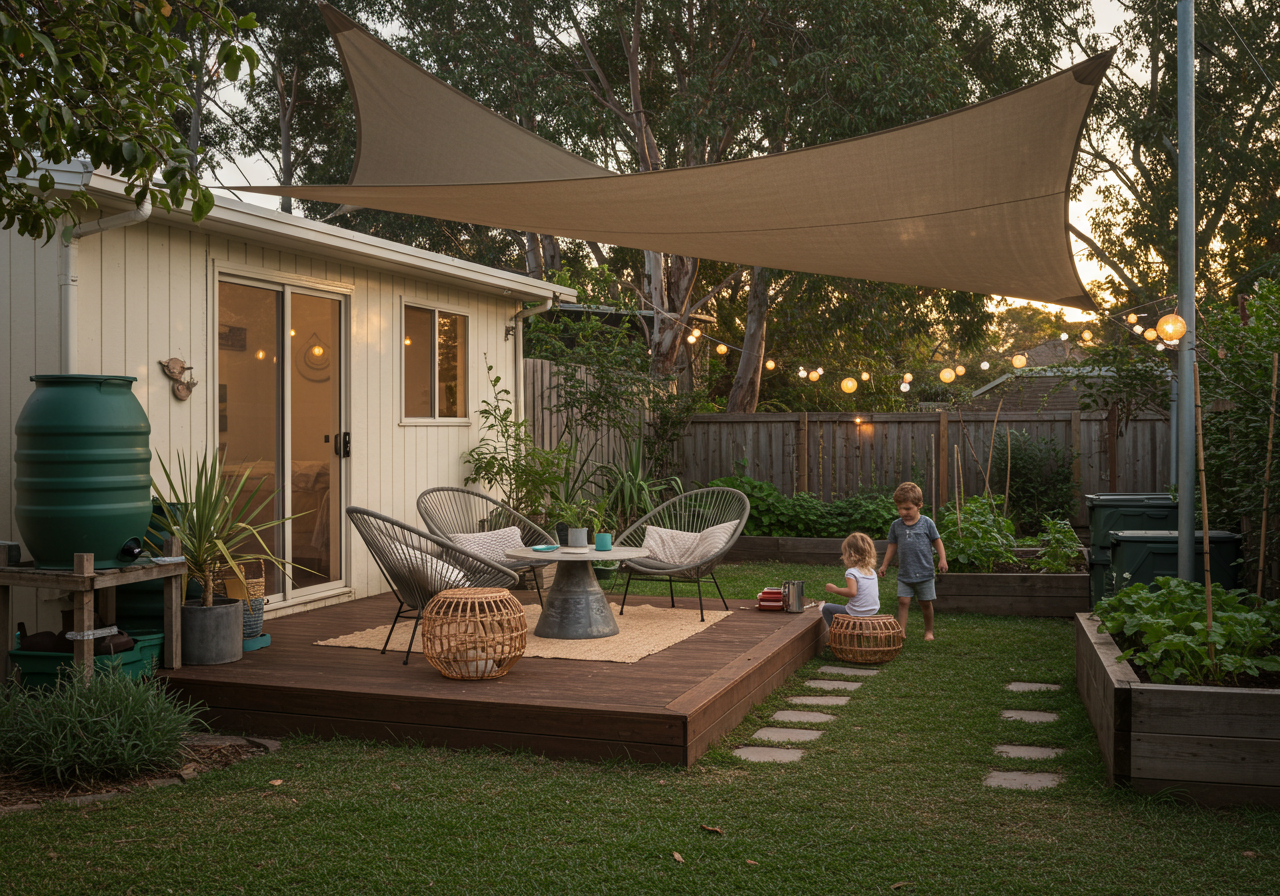

Grow Your Own Garden
Start a container or raised-bed garden for herbs, leafy greens, and veggies. Compost kitchen scraps to enrich your soil and reduce landfill waste.
Support Local Pollinators
Plant native flowers, avoid pesticides, and add a bee bath to support pollinators that sustain your local ecosystem.
Common Myths About Eco-Friendly Living
Let’s debunk some of the most common misconceptions that hold people back from transitioning to greener homes:
- “It’s too expensive.” Many eco upgrades save money long-term through lower energy bills and fewer replacements.
- “Green products don’t work as well.” Today’s natural cleaners and sustainable materials rival conventional options in quality and durability.
- “It’s all or nothing.” Every small step counts. Even a single swap makes a difference over time.
Room-by-room Action Summary
| Room | Quick swaps or upgrades |
|---|---|
| Living room | LED bulbs, reclaimed furniture, natural rugs |
| Kitchen | Glass storage, composting, ENERGY STAR appliances |
| Bathroom | Bar soaps, low-flow fixtures, refillables |
| Bedroom | Organic bedding, non-toxic mattress, plants |
| Laundry | Cold wash, natural detergents, air-dry |
| Outdoor | Container garden, native flowers, compost |
Tools and Brands That Support Green Living
Looking for help along your eco journey? Here are some sustainable tools and brands worth exploring:
- Tools: Water usage monitors, compost bins, LED light strips, and reusable produce bags.
- Brands: Grove Collaborative, Who Gives a Crap, Blueland, Dropps, EarthHero.
- Apps: Think Dirty (to check product toxicity), JouleBug (to track habits), Ecosia (a search engine that plants trees).
Key Takeaways
- Every room offers opportunities to reduce waste, save energy, and live more sustainably.
- Eco-friendly home living improves health, saves money, and supports a better planet.
- Start small: pick one room, make simple swaps, and build from there.
Ready to transform your home into a true eco oasis? Subscribe to our newsletter for weekly green living tips, DIY swaps, and sustainable product reviews. Share this guide with a friend, and take your first step toward a greener lifestyle one room at a time.
Copyright © 2025 FroyoSpace. All rights reserved.
